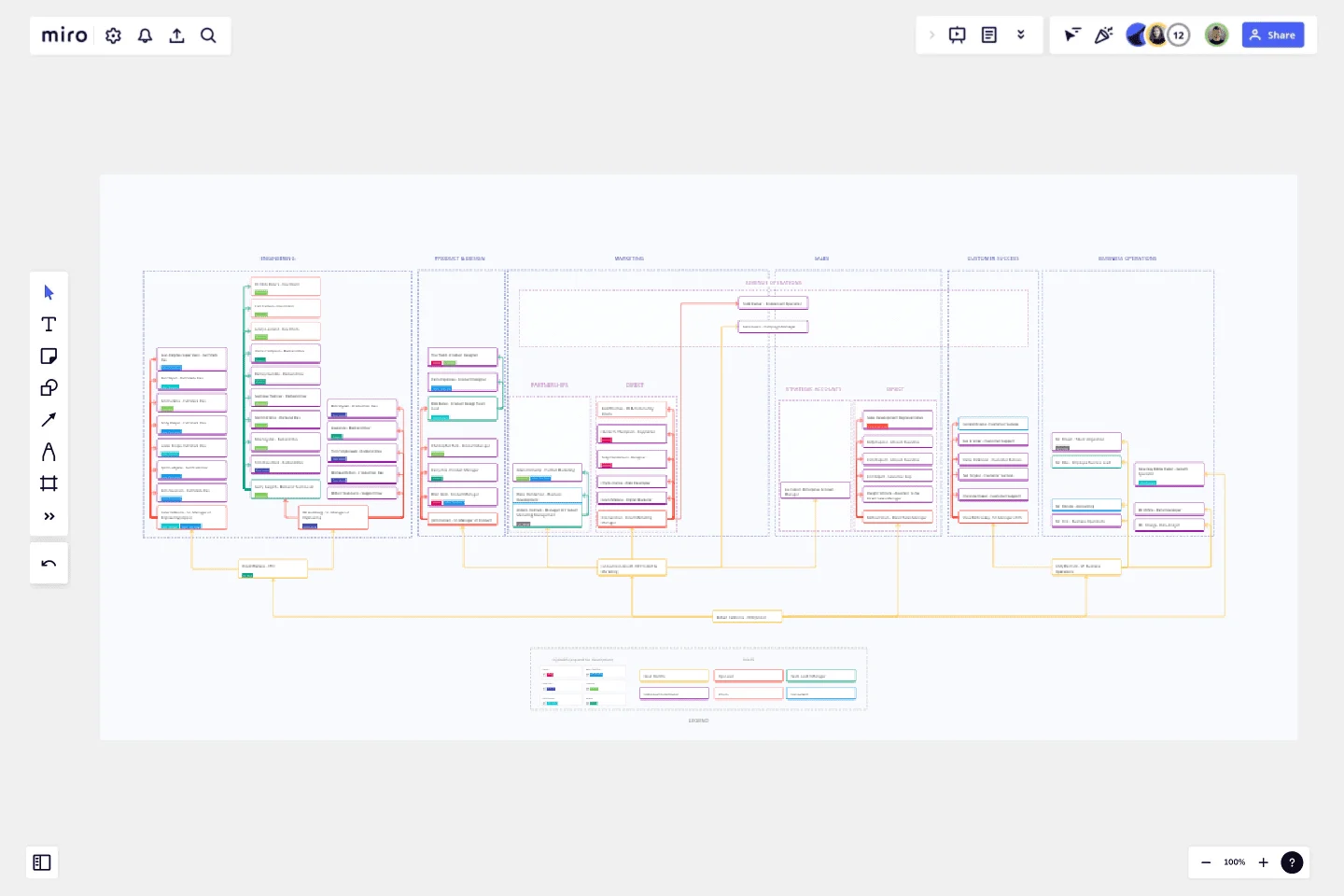Company Organization Chart
An organizational chart is a diagram that visually conveys a company's internal structure by detailing the roles, responsibilities, and relationships between individuals within an entity.
This organizational chart depicts an enterprise-wide map complete with tags to designate squads and senior officials.
Focus on your work instead of sending all your colleagues Slack messages trying to find out who is in charge of a specific Area of Responsibility, transparency turns barriers into bumps and a clearly defined organizational chart will help clear many things up.
Customize your own organizational chart by creating an easily accessible visual reference of structure. Make this document the one stop shop for human resource and operational hierarchy by adding photos and links to employee profiles.
Pro tip: Bookmark your favorite Miroverse templates for later use!
This template was created by Reid Thomas.
Get started with this template right now.
SIPOC Template
Works best for:
Agile Methodology, Strategic Planning, Mapping
A SIPOC diagram maps a process at a high level by identifying the potential gaps between suppliers and input specifications and between customers and output specifications. SIPOC identifies feedback and feed-forward loops between customers, suppliers, and the processes and jump-starts the team to think in terms of cause and effect.
Product tone of voice
Works best for:
Product Management, Planning
The Tone of Voice Workshop template helps product teams define and align on brand tone and messaging. By facilitating collaborative workshops, exploring brand personality traits, and defining tone guidelines, this template ensures consistent and impactful communication. With sections for identifying target audience personas, articulating brand values, and crafting messaging principles, it enables teams to create authentic and compelling brand voices. This template serves as a foundation for building strong brand identities and resonating with customers across all touchpoints.
Product x Marketing Roadmap
Works best for:
Product Management, Roadmap
Align product development with marketing strategies using the Product x Marketing Roadmap. This template helps you coordinate product launches, marketing campaigns, and key milestones. Use it to ensure both teams are on the same page, maximizing the impact of your product releases. Ideal for product managers and marketing teams aiming to synchronize their efforts and achieve cohesive, successful product launches and campaigns.
Organization & Process Mapping
Works best for:
Org Charts, Operations, Mapping
The Organization & Process Mapping template facilitates the analysis and optimization of organizational processes. By visualizing process flows, bottlenecks, and handoffs, this template helps teams identify inefficiencies and streamline workflows. With sections for documenting process steps and improvement opportunities, this template empowers teams to implement process enhancements and drive operational excellence.
Cross Functional Flowchart
Works best for:
Org Charts, Business Management
Have a quick look at everyone on a project and see exactly what they’ll contribute. That’s the clarity and transparency a cross-functional flowchart will give you. These are also called “swim lane” flowcharts because each person (each customer, client, or representative from a specific function) is assigned a lane—a clear line—that will help you visualize their roles at each stage of the project. This template will empower you to streamline processes, reduce inefficiencies, and make meaningful cross-functional relationships.
Product Brief Brainstorm Template
Works best for:
Product , Product Management
The Intelligent Product Brief Brainstorm template in Miro is crafted to supercharge your product development process. One standout benefit of this template is its AI-powered capabilities that elevate your brainstorming sessions. Not only does it help in organizing and capturing ideas, but it also provides additional insights and solutions, ensuring a thorough and innovative approach to problem-solving. This intelligent feature significantly cuts down the time spent on synthesizing information, allowing teams to concentrate on refining and implementing the best ideas, ultimately leading to more effective and efficient product development.
